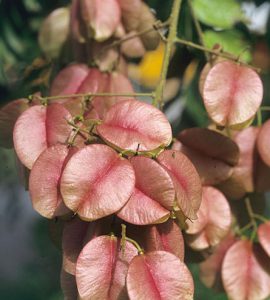
How do you communicate to others about invasive plants? How do you tell someone that their prized golden pothos, climbing up their massive Chinese tallow tree are likely spreading into natural areas? Or that their sea of coral ardisia and army of tuberous swordferns are causing damage outside of their yard? What do you say when they offer you cuttings?
Picture it
Your new neighbor invites you over for a garden tour. They’ve planted a beautiful mix of Florida native plants like blanket flower, coreopsis and salvias along with some harmless nonnatives like pentas and butterfly bushes. Then your eyes lock onto the dreaded Mexican petunia (Ruellia simplex) and beach naupaka (Scaevola taccada) and your face crumples. To complicate things, the bees, butterflies and beetles are flitting from flower to flower!
Having conversations about how damaging these plants are to Florida’s natural areas can be really difficult. It’s obvious that your neighbor cares about creating habitat for wildlife. In fact, they have included plants that are doing just that!
The very same plants growing in many Florida yards are damaging native plant communities. Can we help make the connection between what’s growing in our own yards to forests and wetlands miles away?

Talking about invasive plants is not easy–be patient and kind
Communicating the impacts caused by invasive plants can be very challenging. This is partly because the idea that plants can be “bad” and not always “good” is something some people haven’t yet considered. It’s important to be kind.
It can be very difficult (if not impossible) to get someone to vilify a beautiful plant that is clearly attracting wildlife. People can also feel an emotional attachment to certain plants, which makes conversations about them even more complicated. However, there are strategies we can use to bring up this sensitive and controversial topic, if someone seems open to the idea.
Using analogies can help communicate complex issues
One way to try to get a person to see an issue in a different light to is provide a solid analogy. Using analogies people are generally familiar with can help make sense of complicated issues. Invasive plants definitely fit into the ‘complex issue’ category.
Decades ago, some ecologists began using the term ‘biological pollution’ or ‘biopollution’ as a way to describe the way invasive plants behave once introduced into natural systems. People understand that pollution is bad for the environment. Using this analogy can help communicate that certain plants are also bad for the environment. This may help people to re-define the way they view invasive plants.
Invasive plants are similar to pollution
Invasive plants are very much like a form of pollution. They deteriorate habitats, degrade resources, provide very few benefits and their impacts worsen over time. Using this analogy can quickly convey some important information to help build shared understanding.

Also, comparing invasive plant introductions to pollution can give us some ownership over a complicated problem. It offers us choices that have positive impacts, such as removing or not planting invasive plants.
Shifting the way we think about and communicate about invasive plants is crucial. In order to spread awareness and encourage people to reject them, we have to effectively communicate a sense of urgency and ownership.
 Communicating about invasive plants: It’s complicated! (12/17/2020) - How do you communicate to others about invasive plants? How do you tell someone that their prized golden pothos, climbing up their massive Chinese tallow tree are likely spreading into natural areas? Or that their sea of coral ardisia and army of tuberous swordferns are causing damage outside of their yard? What do you say… 1
Communicating about invasive plants: It’s complicated! (12/17/2020) - How do you communicate to others about invasive plants? How do you tell someone that their prized golden pothos, climbing up their massive Chinese tallow tree are likely spreading into natural areas? Or that their sea of coral ardisia and army of tuberous swordferns are causing damage outside of their yard? What do you say… 1 2019 – A Year of Growth (12/29/2019) - By Dr. Jason Ferrell, UF/IFAS Center for Aquatic and Invasive Plants Director The UF/IFAS Center for Aquatic and Invasive Plants (CAIP) is not new. The Florida legislature formed CAIP in 1978. The Center has been nationally and internationally recognized as having the most current information on invasive plant monitoring and management since its inception. Not… 1
2019 – A Year of Growth (12/29/2019) - By Dr. Jason Ferrell, UF/IFAS Center for Aquatic and Invasive Plants Director The UF/IFAS Center for Aquatic and Invasive Plants (CAIP) is not new. The Florida legislature formed CAIP in 1978. The Center has been nationally and internationally recognized as having the most current information on invasive plant monitoring and management since its inception. Not… 1 What is the Florida Invasive Plant Education Initiative? (9/24/2019) - Invasive species are bad news Invasive plants are among the top threats to our natural world. They impact biodiversity almost as much as habitat loss. Each year Florida spends more than $50 million dollars to fight against the spread of plants that come from other areas of the world. Invasive plants arrive in our state… 1
What is the Florida Invasive Plant Education Initiative? (9/24/2019) - Invasive species are bad news Invasive plants are among the top threats to our natural world. They impact biodiversity almost as much as habitat loss. Each year Florida spends more than $50 million dollars to fight against the spread of plants that come from other areas of the world. Invasive plants arrive in our state… 1 0
0
